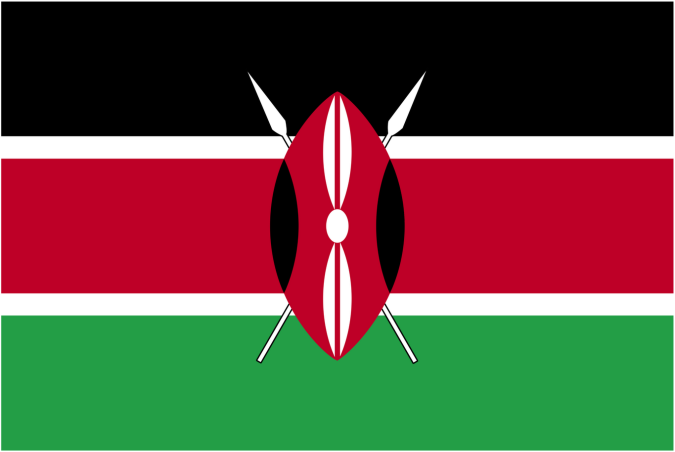Kenyans move Sh1.1trn on mobile phones in 6 months

AUGUST 11,2014
BUSINESSDAILYAFRICA
Kenyan consumers used mobile money services to transfer more than Sh1 trillion in the first six months of the year, the latest industry statistics show.
The new Central Bank of Kenya’s (CBK) report shows the value of mobile payments grew by nearly a third to Sh1.1 trillion in the first six months of the year compared to Sh872.1 billion last year. This means that consumers moved an average of Sh186.4 billion monthly or Sh6.2 billion per day compared to the Sh4.8 billion a day they moved in a similar period last year.
Kenya has six main mobile money platforms —Safaricom’s M-Pesa, Airtel Money, yuCash, Orange Money, MobiKash and Tangaza Pesa — backed by a network of about 120,781 agents.
The increased uptake of mobile money comes at a time when mobile money providers are fighting for a piece of the lucrative retail payments market with the launch of mobile payment products.
The merchant platforms include Safaricom’s Lipa Na M-Pesa; Lipa Sasa Na MobiKash; Airtel Money and yuCash. Tangaza Pesa is currently piloting MyDuka – a new online shopping product.
Safaricom reckons that the success of M-Pesa - Kenya’s pioneer mobile money service – has inspired ordinary consumers, companies, banks as well as government agencies to embrace mobile commerce.
“I think that the early success of M-Pesa has encouraged ordinary citizens to have confidence in a concept that otherwise would have been difficult for them to comprehend or accept,” said Bob Collymore, the Safaricom chief executive. “This growth is driven primarily by an increase in active M-Pesa customers and an increase in the average number of transactions per customer.”
Kenya had a total of 25.9 million mobile money subscribers at the end of June, having risen from 23.75 million in June 2013, a growth of 9.2 per cent.
The CBK’s data shows that the value of mobile money transactions more than tripled in the past five years to reach Sh1.1 trillion compared to the Sh322.5 billion that was moved in the first six months of 2010.
Sustained growth of mobile money is further attributed to the convenience it offers users beyond the traditional money transfer to include payment of utility bills such as water, rent and electricity, and for shopping and bus fare.
Safaricom in June 2013 launched Lipa Na M-Pesa - a service that enables consumers to pay for goods and services using M-PESA – which has so far enlisted 122,000 outlets including airlines, hotels, supermarkets, public service vehicles and oil marketers.
“Lipa Na M-Pesa has enabled cashless merchant payments and facilitated trade between businesses and their customers while improving business efficiency,” Safaricom said in a statement. Safaricom charges a flat processing fee of one per cent on the value of every Lipa Na M-Pesa transaction.
The Nairobi bourse-listed telecoms company has 19.3 million registered M-Pesa users who are serviced by 81,025 agents across Kenya. M-Pesa earned Safaricom Sh26.56 billion or nearly a fifth of total revenue in the financial year ended March 2014, confirming the growing importance of mobile money as a revenue stream.
Mobikash has launched the Lipa Sasa Na MobiKash, a merchant payment service that allows customers to pay for goods and services, that is available to subscribers of all the four mobile networks. Users pay a standard Sh15 processing fee. Mobikash, which is controlled by investment firm Foundation Enterprise Programme (FEP), has so far recruited 4,000 agents and 2,000 Lipa Sasa Na MobiKash merchants in Kenya.
“We are seeing more person-to-business payments, utilities and bulk payments such as salaries,” said Duncan Otieno, the chief executive of Mobikash Afrika.
Tangaza Pesa, which partnered with Airtel to acquire a Mobile Virtual Network Operator (MVNO) licence in April, said increased uptake of m-commerce is linked to the growing use of mobile money services.
Oscar Ikinu, the chief executive of Tangaza Pesa, said the advent of MVNOs in Kenya is likely to further propel the mobile money industry by increasing variety, lowering costs and signing up more retailers.
Equity Bank and Zioncell have also been awarded MVNO licences and plan to roll out mobile banking services complemented by voice and data offerings. “We see mobile money growing given that we can tie up value-added services to our mobile money offering once we have our own SIM cards,” Mr Ikinu said.
Tangaza Pesa has about 598,000 customers and a network of 3,800 agents. The company plans to roll out its own SIM cards and launch a merchant payment facility.
The 2013 FinAccess survey credits mobile money services for the more than doubling of Kenya’s banked population to 67 per cent from a low of 26.1 per cent in 2009. “There has been increased convergence of banking and mobile phone platforms as banks explore more convenient and cost-effective channels of banking,” said CBK governor Njuguna Ndung’u in the 2013 Bank Supervision Annual Report.
The shift towards retail payments, mobile banking and bulk transfers is seen as the next frontier in the evolution of mobile money growth. The volume of person-to-business payment using Lipa Na M-Pesa service and Pay Bill numbers grew 73 per cent to 11.0 billion per month in the year to March 2014.
Statistics from Safaricom show that bulk payments to settle dividends, per diems, salaries and wages through M-Pesa from businesses to persons grew 70 per cent to an average of Sh8.7 billion per month in the period under review.
This means retail and bulk payments on the M-Pesa network now account for nearly a fifth or 19 per cent of total cash moved on the platform – helping Safaricom diversify from peer-to-peer mobile transfers which is high volume but low in earnings.
 Africas leading resource for digital financial services
Africas leading resource for digital financial services


comments